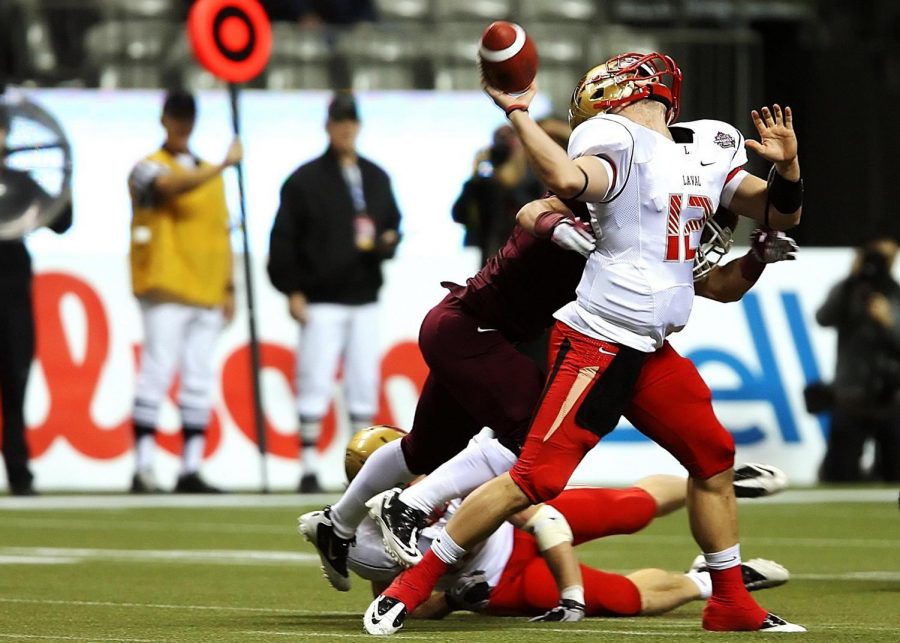Roughing the passer rule hurts football
Ambiguous, subjective language makes rule difficult to enforce, changes way defensive players must tackle
Instead of changing the rules to make football safer, the NFL should focus on changing the culture of the game so that those kinds of rule changes aren’t necessary to protect players from getting life-threatening injuries.
October 23, 2018
The NFL’s newly-implemented rule about roughing the passer makes it almost impossible for anyone to know what might constitute a penalty and it’s making football worse for the players as well as for the fans.
While the new NFL rule provides additional language intended to protect quarterbacks, the ambiguity makes it hard to call.
The new rule states it is a penalty if a defender were to “land on top of [the quarterback] with all or most of the defender’s weight.”
Don’t get me wrong, I’m all for protecting the heads of all NFL players in light of the devastating chronic traumatic encephalopathy (CTE) affecting players. But rules should balance the objective of protecting players and making the game fair and fun.
This new rule increases the number of flags and let’s referees control the game more than the players or the rulebook. Enforcing the rules comes down to the best judgment of each referee and that changes from person to person too much for every rule to be enforced objectively.
Other penalties are easy to call. Offsides and false starts are obvious because both the language and what each infraction looks like is obvious in nearly every situation. This is not the case with roughing the passer.
If a rule is designed to protect people but is ambiguous or too challenging to call, it is not an effective rule.
Instead of adding specific regulations about where, when and how hard players can hit each other, the NFL should be focusing on changing the culture of the game itself.
People watch the NFL because they want to see teams compete and who the most physically-gifted athletes are. They want to see big-time players make big-time plays. But those same players need to be reminded that it is a game, a tradition they share with one another and not an excuse to hurt each other just because it’s competitive.
It is a defensive end’s job to stop the quarterback and the offense, but all players should respect one another.
Richard Sherman, former cornerback for the Seattle Seahawks and a current player for the San Francisco 49ers, wrote on Twitter, “[The NFL doesn’t] care about the rest of us getting hurt. Long as the QB is safe.”
The NFL is focusing too much on the quarterbacks and not as much on the rest of the players.
In many cases, this new rule is actually doing the opposite of what was planned and resulting in more players with serious injuries. Miami Dolphins defensive end William Hayes tore the ACL in his right knee on Sept. 23 trying to avoid landing on Oakland Raiders quarterback Derek Carr.
Yes, I get that there is a risk of getting injured by getting hit hard and I completely support the NFL’s effort to reduce the number of concussions suffered by players. But as the most elite league in all of football, the rules should respect the intelligence and perseverance of the players by supporting a culture of camaraderie and not intentional violence.
As a competition of strength, skill and execution, rules that protect specific positions should be so central to the honor of the game that they shouldn’t need to be rules at all.
Fans want to see teams play their best and that isn’t possible when there are too many flags thrown for well-intentioned but poorly-conceived rules.
If the NFL wants fans to continue to buy tickets and watch games on TV, it should find a way to protect players while also letting them play the game.





















